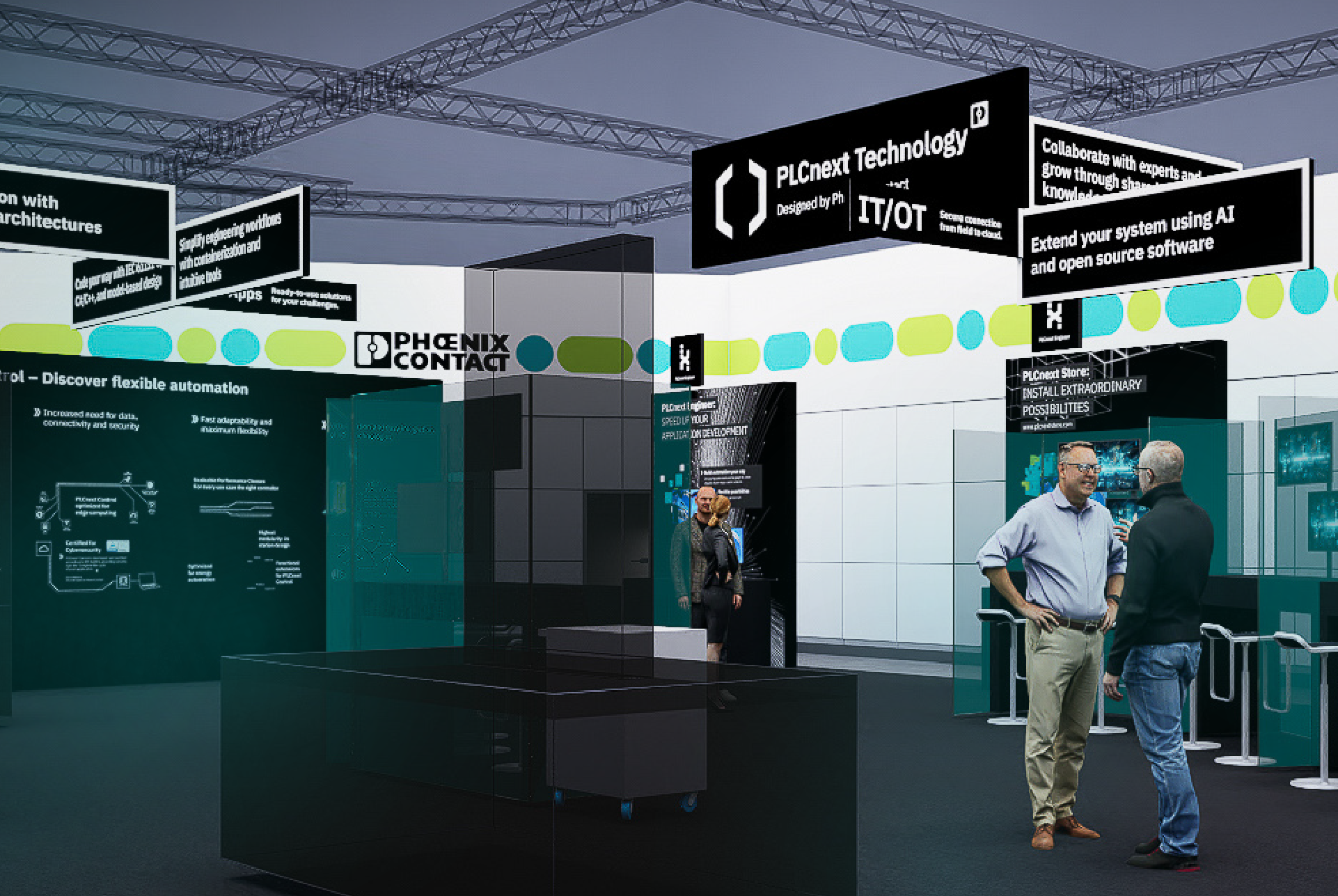
Imagine a factory where everything runs smoothly and efficiency is at its highest. Suddenly, an unexpected problem arises, and the team must quickly find the cause and fix it. This situation highlights the importance of adaptable and reliable automation systems in modern industry. We now have the opportunity to hear from Prof. Dr. Andreas Würger, an expert in industrial communication technology and automation, and former PLCnext Technology specialist at Phoenix Contact. He will share insights into the challenges and opportunities in industrial automation—and how PLCnext Technology is addressing these key issues for the future.
Current Challenges in Automation Technology
Q1: Dr. Würger, automation technology is evolving rapidly. Can you elaborate on what you see as the major challenges facing the field today?
Dr. Würger: “The major challenge in automation technology today is that its task is no longer just pure automation, i.e., the control and regulation of technical processes, but much more, such as energy and resource management or providing data for big data applications. These tasks require a rethinking in control technology since they can no longer be solved with classic, IEC 61131-3 programmable controllers. They also lead to a breakdown of the classic automation pyramid, where communication was exclusively from level to level, towards a system structure where data is exchanged freely across levels. Both offer great opportunities but also risks, to which automation technology manufacturers must respond!”
Capabilities of PLCnext Technology
Q2: Given these challenges, how is PLCnext Technology equipped to provide solutions? What specific capabilities does it offer?
Dr. Würger: “PLCnext Control already offer a wide range of possibilities besides classic IEC 61131-3 applications, such as programmability in almost all common high-level languages and Docker integration. Furthermore, the controllers have various interfaces that are suitable for meeting future communication technology requirements. This includes both internal interfaces for parallel operation and integration of different programs or programming paradigms, as well as external interfaces for industrial communication, such as OPC UA.”
IT Security in Automation
Q3: How does PLCnext Technology address IT security challenges within the automation infrastructure?
Dr. Würger: “PLCnext Control were the first PLCs on the automation market to be certified by TÜV according to IEC 62443-4-2 SL2 (Security Level 2)! Additionally, PLCnext Control is certified according to IEC 62443-4-1 ML3 (Maturity Level 3). This means that both the “secure product lifecycle” and the “technical security requirements” for industrial IT security are TÜV certified.
For users, this enables easier implementation of secure automation solutions, thanks to pre-installed features such as firewall, VPN-encrypted communication, user and software component authentication, backup and restore, as well as device and update management. The team of PLCnext Technology also offers the comprehensive Security Infocenter, which explains security measures, use cases, and certified functions in detail.”
Organizational Requirements
Question 4: Are there additional requirements, perhaps of a more organizational nature, that need to be addressed in a secure automation infrastructure?
Dr. Würger: “One requirement that is more organizational in nature is that device firmware and certificates in a secure automation infrastructure must always be kept up to date. This is a significant effort, especially in widely distributed systems. PLCnext Technology addresses this challange with Device and Update Management (DaUM). This is an application for centrally monitoring and updating device firmware and certificates. With DaUM, users always have a complete overview of outdated firmware or expired certificates. Updates can be planned directly via the software, distributed to the devices, and installed on the devices with a time delay. DaUM includes not only Phoenix Contact devices but also third-party devices. Since this Device and Update Management uses the OPC UA DI software update mechanism, any device that implements the DI software update mechanism can be integrated.”
Integration of OPC UA
Q5: You have mentioned OPC UA as a key technology twice now. Could you explain a bit more about how OPC UA is integrated into PLCnext Technology?
Dr. Würger: “Of course! All PLCnext Control have an extensive OPC UA server integrated, which enables simple and secure access to data and their mapping in any information models. An integrable client is available for accessing subordinate servers. Horizontal controller-to-controller communication can be realized via OPC UA PubSub. To enable users of all experience levels to get started quickly and work efficiently with the technology, PLCnext Technology also offers a wide range of extensive documentation, simple and complex examples, and open-source tools.”
Preparing for Future Requirements
Q6: So, with all these features and capabilities, are we perfectly prepared for all future requirements with PLCnext Technology?
Dr. Würger: Yes and no. We cannot be experts in everything! However, Phoenix Contact has created an open ecosystem with PLCnext Technology that invites experts in every field to develop and publish their solutions for our system. In the PLCnext Store, developers can easily share and distribute their solutions for the PLCnext platform, and in the PLCnext Community, users can freely exchange ideas. To truly be prepared for the challenges of automation, it is crucial to leverage the collective intelligence of the community and explore solutions together.
Wrap it up
Thank you, Andreas, for sharing these insights. The community-driven approach is a fundamental part of PLCnext Technology’s success. By leveraging the collective expertise and swarm intelligence of our users, we can better prepare ourselves for the challenges and opportunities of the future.
Quick note!
Don’t forget, our AutoMAYtion Month campaign is currently running! Throughout the month, we’ll be sharing content focused on automation. Be sure to check our social media channels regularly for updates and new contributions.
Instagram: https://www.instagram.com/plcnext/
LinkedIn: https://www.linkedin.com/showcase/plcnext-technology/
Facebook: https://facebook.com/plcnext/



